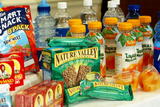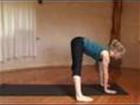
Healthy Snacks for Kids
In addition to their three regular meals, kids often get quite a few calories from the snacks they eat throughout the day.
Unfortunately, for too many kids, that means a lot of extra calories, sugar, and fat. In addition to increasing the risks of childhood obesity, snacks that aren’t healthy can put your kids at risk for cavities, especially if they are eating sticky foods like fruit snacks or candy.
Snacks can be a good part of your child’s diet, though, including low-calorie snacks and low-fat snacks like fresh fruit.
Healthy Snacks
In addition to fresh fruit, which are often high in fiber and vitamin C, low in fat, and have no added sugar, other healthy snacks that are quick and easy for kids to eat can include:
- fresh fruit, such as apples, bananas, grapes, oranges, strawberries, watermelon, etc.
- dried fruits, including raisins and prunes, although these are considered sticky foods that can put kids at increased risk for cavities, so consider having your kids brush and floss after eating
- fruit cups or canned fruit in water, 100% fruit juice or light syrup
- raw vegetables, including carrots, celery, or broccoli, that can be served with a low-fat dip or dressing
- dairy products, such as low-fat cheese, yogurt, and pudding, or a homemade fruit smoothie
- whole grain snacks, which can include some breakfast cereals, crackers, cereal bars, baked chips, and popcorn (without added butter), or pretzels
- popsicles made with 100% fruit juice
Although not low in fat or calories, nuts and trail mix can also be considered a healthy snack from if a child is only given a single serving and it is not eaten on a daily basis.
What your child has to drink when he snacks can also be important. Many kids drink juice, tea, soda, or fruit drinks when they have their daily snack, which can greatly increase the amount of calories they are getting at snack time. Instead, limit your child to drinking water, low-fat or fat-free milk, and 100% fruit juice.
Unhealthy Snacks Habits
In addition to getting snacks with a lot of sugar and fat, getting too many snacks or snack serving sizes that are simply too large are habits that are unhealthy for kids.
You can avoid most unhealthy snack habits by:
- not letting your kids eat unhealthy snacks, including high-fat snacks and high-calorie snacks, except as an occasional treat. These can include cookies, chips, candy, doughnuts, fruit drinks, soda, etc.
- having a regular snack time for your kids — usually late morning and early afternoon for toddlers and preschoolers and just after-school for older kids. Keep in mind that most kids shouldn’t need a bedtime snack though.
- having nutritious snacks handy and ready for your kids to eat
- limiting snacks to just 100 to 150 calorie servings so that they don’t turn into an extra meal
- not allowing snacks to be too close to lunch or dinner
If you do nothing else, at least monitor the serving size of your child’s snacks, especially if you give your child prepackaged snack foods. For example, if your child’s after-school snack consists of Oreo cookies, keep in mind that it takes just three Oreos to 160 calories and a lot of extra fat and sugar in his diet. And if he eats six or nine Oreo cookies, that quickly adds up to an extra meal — and not a very healthy meal.
Healthy Snacks, Healthy Snacks Health, Healthy Snacks Health Latest, Healthy Snacks Health Information, Healthy Snacks Health information, Healthy SnacksHealth Photo,Exercising for Weight Health photo, Healthy Snacks Health Latest, Healthy SnacksHealth latest, Exercising for Weight Health Story, Healthy Minnesota Health story, Healthy Snacks Video, Healthy Snacks video, Healthy Snacks Health History, Healthy Snacks Health history, Healthy Snacksover Picture, history, Healthy Snacks Asia, Healthy Minnesota asia, Healthy Snacks Gallery, Exercising for Weight gallery, Healthy Snacks Photo Gallery, Healthy Minnesota photo gallery, Healthy Snacks Picture, Healthy Snacks picture, Healthy Snacks Web, Malaysia Health, web Health, web Health picture, video photo, video surgery, gallery, laparoscopy, virus, flu, drug, video, Health Health, calories, photo, nutrition, health video, symptoms, cancer, medical, beating, diet, physical, Training, organic, gym, blister, exercise, weightloss, surgery, spiritual, eating, tips, skin, operation, bf1, Healthy, Snacks, for, Kids




